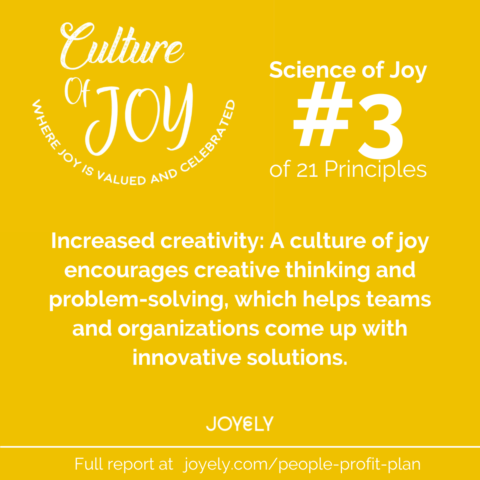Finally, when employees experience a culture of joy and collaboration, they are more likely to form relationships with their coworkers. This sense of connectedness and camaraderie can further increase their creativity and engagement, as they feel supported and valued in their work.



